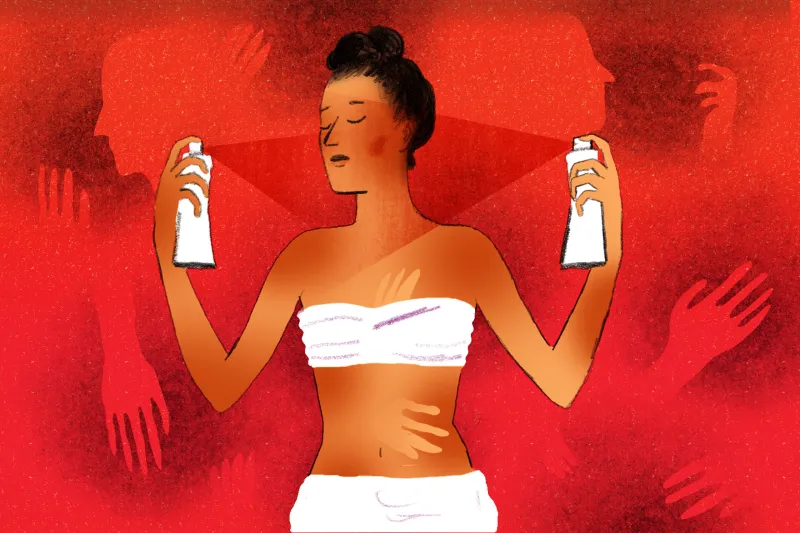Something is severely affecting the health and wellness of the students at WHS, and, this time, it’s not COVID-19. Students arrive at their classes with alarming symptoms such as discolored hands, streaks across their faces and patches down their arms. This condition is highly contagious, with more students seeming to be infected each week. WHS is undergoing an outbreak. A self-tan epidemic.
For decades, WHS has had an underlying problem of spray tans, typically outbreaking in the winter months and around Homecoming and Prom season. Social media and influencers play a significant role in the rise of spray tan cases. With students trying to live up to the beauty standard set for them on their Instagram feeds and Snapchat stories, many try out spray tanning to hopefully achieve a perfect bronze tone. It is the easiest way to execute an instantly gratifying tan, especially in the winter months when the New Jersey UV index is not high enough for sun tanning potential. Spray tanning has become a cultural norm among high schoolers, but, often, it leads to more horror stories than successes.
Senior Kaitlynn Czarnecki is a prime example of a student at WHS who tried spray tans during her sophomore year and has been addicted ever since. She has been living with this condition long-term, so much so her psychological well-being has been affected.
Czarnecki, similar to many others at WHS, always has to have the perfect tan glow. “I think spray tans are super normal and nice… everyone has their thing and spray tanning happens to be mine!” It’s important that if you get to this critical condition, you seek help.
With Homecoming coming up, more students will want to cover their pale skin to complement their dresses, causing the number of spray tan cases within the student population to increase.
If you are experiencing any of these symptoms below, you yourself have been infected by a bad case of a spray tan syndrome.
Streaky: Streaking can occur if a spray tan is unevenly distributed on one’s body. Lines appear, showing up looking like unblended makeup or sometimes even zebra stripes.
Orange: The self-tan appears in a different skin tone than intended. Common descriptions of your skin tone may include orange, oompa-loompa or Cheeto.
Overly Emotional: When a tan appears in a way that is unflattering, a common emotion is crying about what you did to your appearance. However, crying makes your spray tan worse. It can leave tear marks stained on your cheeks, now making you orange and streaky.
Smelly: A tan often releases a peculiar odor, some describe as goldfish breath, cat pee or even burning flesh.
We’re sorry, but once you’ve hit these stages, there’s nothing left that you can do. You could exfoliate your skin and hope it fades your pumpkin color and zebra stripes, but it most likely won’t budge. We highly recommend staying in hiding for the next three to four days while your tan wears off. However, if lockdown is not a viable option, you can just tell everyone you took a quick weekend getaway to Aruba.

